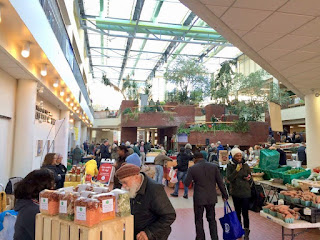Scenes from Childhood Dept.: Here's a re-run which first appeared here in 2009, but was initially published in Metroland Magazine in 1986, before it went all alt-weekly.
A KID UNDERSTANDS the importance of tracking down the neighborhood
ghouls. The kid knows (as parents don’t) that those ghouls exist. It’s
just a matter of finding them.
We had a witch on our street. I don’t know if we really saw her as
someone who consorted with bats and such, although the movie “The Three
Lives of Thomasina” gave witches a pretty good image. But we convinced
ourselves that this lady was at least gently malevolent—and she
certainly added a tinge of excitement to my afternoons.
We discovered, on a neighbor’s property, an abandoned car. It sat in a woodsy corner of an otherwise immaculate lot, a hulk with the squatty wheelbase and sloped top of a vehicle in an old gangster movie, pale blue where any paint survived. At first we just sat in the smelly old thing, imagining it to be a limo or rocket or time machine. Than we got more rambunctious. I jumped on the roof, enjoying the bouncy resilience of the metal. My brother broke the windows, delighted with the reticulation of the old safety glass. Kenny peed on the engine.
Our games got noisy and attracted the property’s owner. She came after us waving a stick, like the lady on the old Dutch Cleanser can, careening across a quarter-acre of fresh-trimmed lawn to flush us from her rotting car.
We fled, in terror and giggles. Of course she was a witch! It wasn’t our noise that had attracted her, but a sixth sense or a crystal ball. The stick she wielded was a spell-casting wand. The car was a trap . . . .







